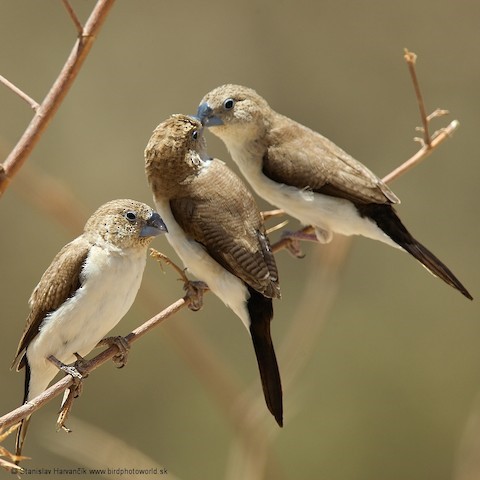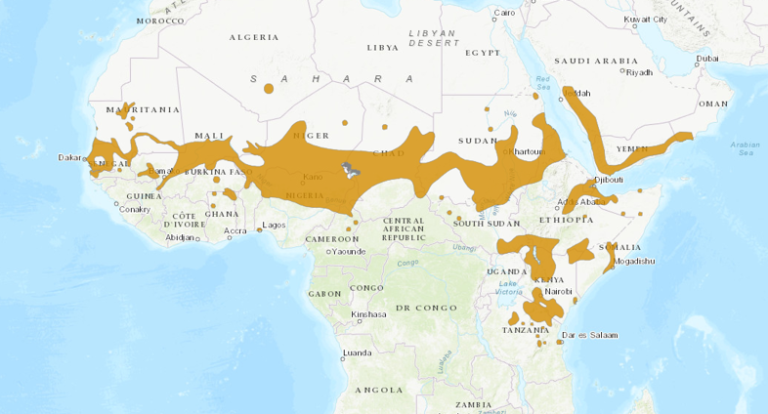Birdfinding.info ⇒ Locally common in a few parts of its range, mainly toward the western and eastern ends of it—although the area in between includes many expanses of little-visited habitat. Areas where it appears especially numerous include: Senegal and Gambia; southern Mali (Bamako); central Ethiopia; central Kenya (Samburu Nature Reserve); northern Tanzania (Lake Manyara National Park); and southern Oman. In Hawaii it is locally abundant in the coastal lowlands each of the main islands. Consistent sites include: on Oahu, Honouliuli and Makapuu Point; on Kauai, Kekaha Beach and Kawai’ele Waterbird Sanctuary; on Maui, Kanaha Pond, Kealia Pond, and the coastal strip from Kehei to Wailea; and on the Big Island, everywhere from Pu’ukohola Heiau south to Kahaluu-Keauhou.
African Silverbill
Euodice cantans
Sahel and savannas of Africa; also on the Arabian Peninsula and introduced to Hawaii.
The nominate subspecies is found in the southern Sahara and Sahel from southern Mauritania south to Sierra Leone and east to western Sudan and northwestern South Sudan.
Orientalis is found from southeastern Egypt south to central Tanzania, and on the Arabian Peninsula from central-western Saudi Arabia south to Yemen and east to southern Oman.
Introduced populations are established on all the main Hawaiian Islands. First noted in 1972 in the Kona region of the Big Island, where it increased and spread rapidly, then colonized the other islands: Maui (1978), Lanai (1979), Kahoolawe (1980), Molokai (1980), Oahu (1984), Kauai (1984), and Niihau (by 2009).
Identification
A pale sandy-brown, long-tailed finch with a bluish bill.
Its upperparts are mainly sandy, its underparts whitish, and its wings and tail dark brown or blackish. With a close, clear view, its back and wings usually show faint, dense barring.
The subspecies are distinguishable in coloration and head pattern. The nominate form is buffier, warmer brown above, and its head is essentially uniform in tone, whereas the eastern orientalis typically shows some contrast between paler cheeks and a darker cap.
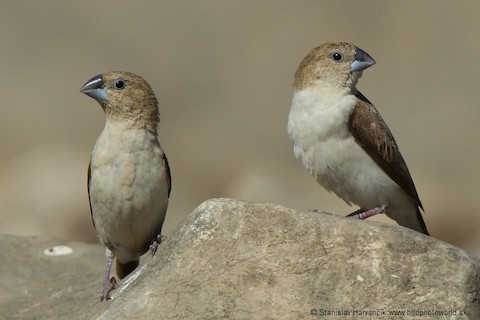
African Silverbill, E. c. orientalis. (Tawi Atayr, Dhofar, Oman; March 29, 2018.) © Stanislav Harvančík
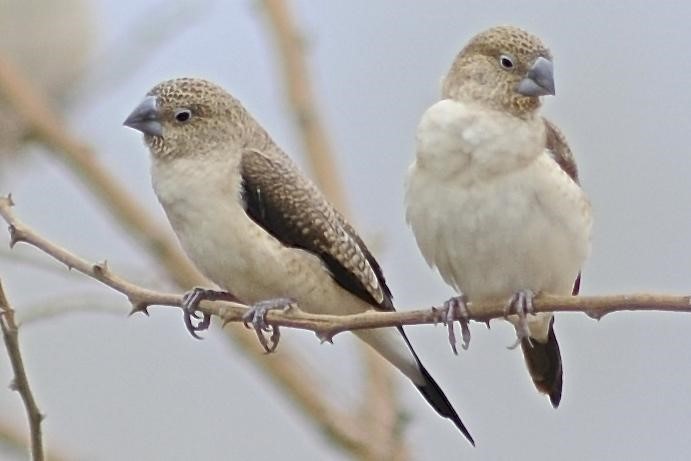
African Silverbill, E. c. orientalis, showing whitish underparts and generally “cold” coloration typical of this subspecies. (Ol Doinyo Lengai, Ngorongoro Conservation Area, Tanzania; October 3, 2014.) © buchert
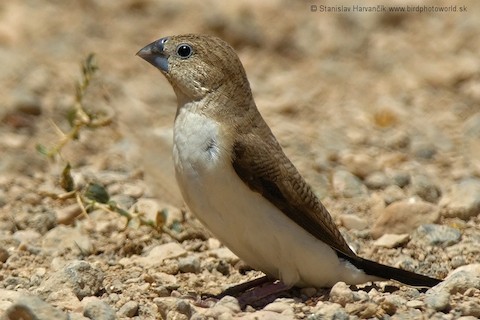
African Silverbill, E. c. orientalis. (Wadi Darbat, Dhofar, Oman; March 27, 2018.) © Stanislav Harvančík
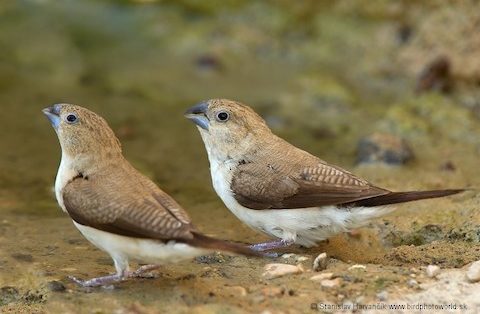
African Silverbills, E. c. orientalis—note fine barring on the wings. (Wadi Darbat, Dhofar, Oman; March 27, 2018.) © Stanislav Harvančík
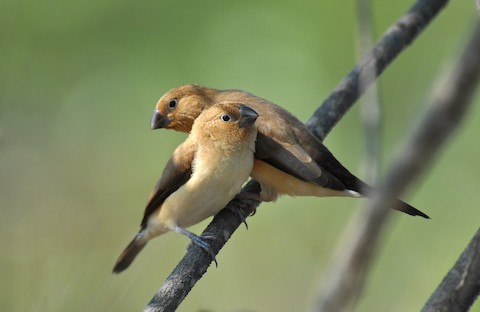
African Silverbills, E. c. cantans, showing warm, buffy coloration typical of this subspecies. (Aimakapa Pond, Big Island, Hawaii; November 13, 2011.) © Ryan O’Donnell
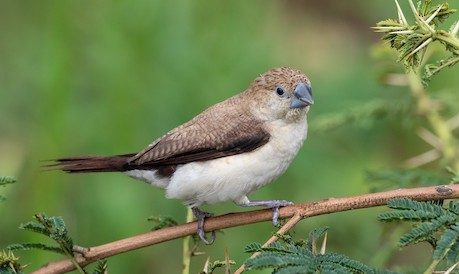
African Silverbill, E. c. orientalis—note fine barring on the wings and subtly scaled crown. (Addis Ababa, Ethiopia; May 23, 2019.) © Forest Jarvis
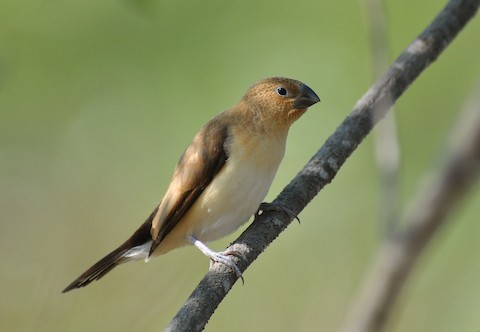
African Silverbill, E. c. cantans, showing buffy face, throat, chest, and flanks, as is typical of this subspecies. (Aimakapa Pond, Big Island, Hawaii; November 13, 2011.) © Ryan O’Donnell
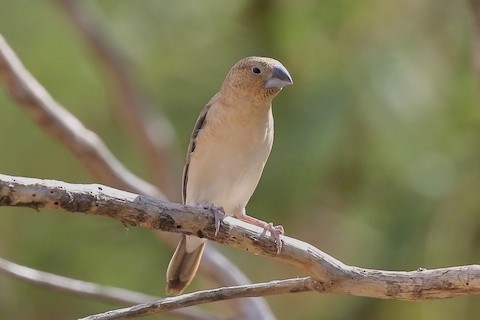
African Silverbill, E. c. cantans, ventral view showing somewhat buffy underparts. (University of Hawaii – West Oahu, Kapolei, Hawaii; August 18, 2017.) © Sharif Uddin
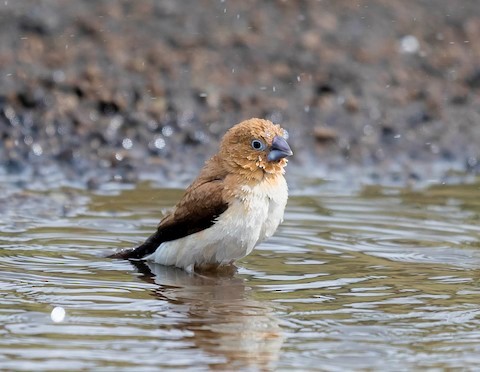
African Silverbill, E. c. cantans, with head feathers plumped out while bathing. (Pu’u Wa’awa’a, Big Island, Hawaii; December 6, 2019.) © William Richards
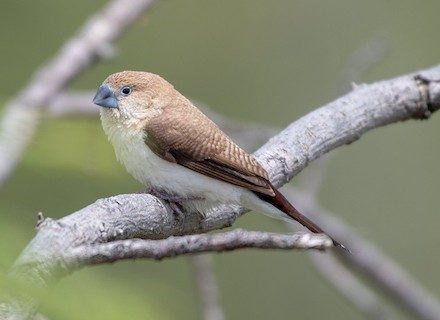
African Silverbill, E. c. orientalis—note fine barring on the wings. (Jemma Valley, Amara, Ethiopia; August 3, 2018.) © Ana Paula Oxom
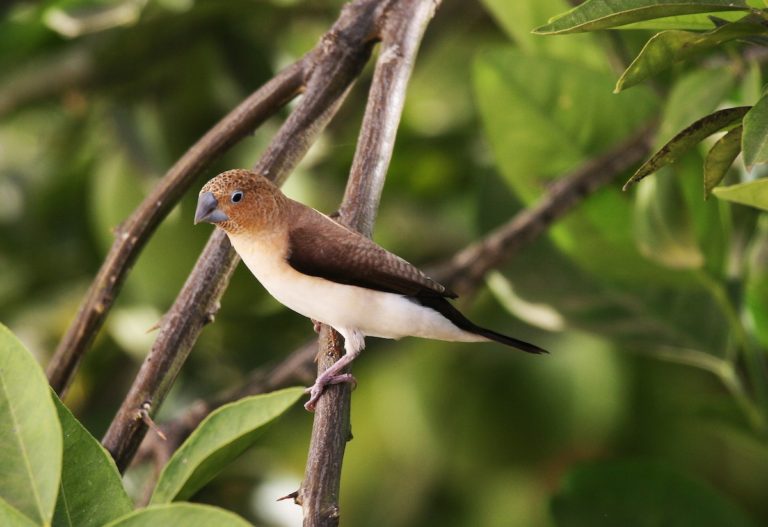
African Silverbill, E. c. cantans, showing black rump. (Dakar, Senegal.) © Eduardo Soler
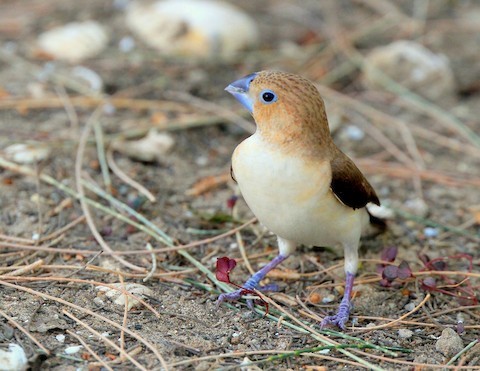
African Silverbill, E. c. cantans, showing bluish bill, legs, and orbital skin. (Kaolack, Senegal; October 31, 2016.) © Robert Martinez

African Silverbill, E. c. cantans, carrying a downy feather, likely nest material. (Kotu, Banjul, Gambia; December 1, 2015.) © Matthias Hofstede
Immature is plain brown, nondescript, with a dark bill, and lacks the adult’s long tail—and is easily confused with other immature finches—especially other waxbills.

African Silverbill, E. c. cantans, immature. (Ranch de Bango, Saint-Louis, Senegal; January 16, 2018.) © Marie O’Neill
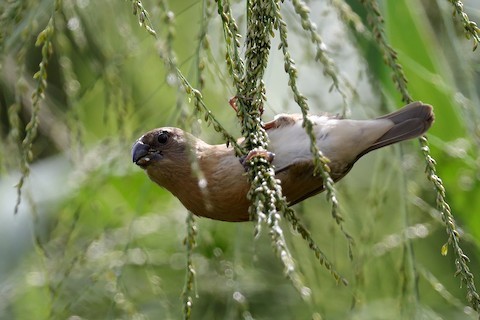
African Silverbill, E. c. cantans, immature, ventral view. (Hanalei National Wildlife Refuge, Kauai, Hawaii; October 12, 2019.) © Doug Hommet
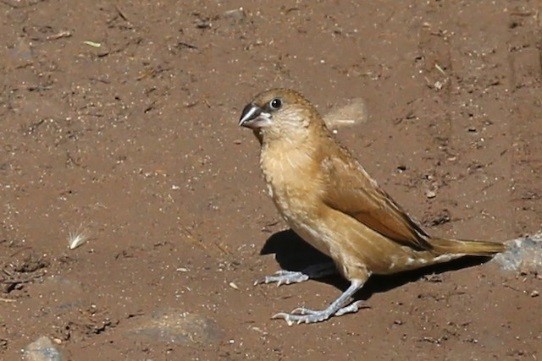
African Silverbill, E. c. cantans, immature. (Waihe’e Coastal Dunes and Wetlands Refuge, Maui, Hawaii; December 6, 2016.) © Laura Keene

African Silverbill, E. c. cantans, immature. (National Tropical Botanical Garden, Kauai, Hawaii; February 14, 2016.) © theArtist andtheSherpa
Cf. Indian Silverbill. The natural ranges of Indian and African Silverbills do not overlap, but through introductions they occur together in parts of the Arabian Peninsula. Both are widely kept as cagebirds and either species could turn up almost anywhere.
The clearest difference is the rump: white on Indian, black on African. Subtler differences include the sides and flanks (Indian’s are typically buffy, often with faint pale barring, whereas African’s underparts are whitish throughout) and the upperparts (Indian’s are unmarked, whereas African’s are faintly barred).
In addition, Indian usually shows a contrast between pale, whitish cheeks and its brown crown, whereas African shows either a muted contrast (in orientalis) or none (in cantans). This distinction may be helpful in some cases, but is not 100% reliable as there is a spectrum in both species.
Notes
Polytypic species consisting of two subspecies, cantans and orientalis. Formerly considered conspecific with Indian Silverbill, together comprising the Warbling Silverbill (Lonchura malabarica).
References
BirdLife International. 2018. Euodice cantans. The IUCN Red List of Threatened Species 2018: e.T22719761A131997328. https://dx.doi.org/10.2305/IUCN.UK.2018-2.RLTS.T22719761A131997328.en. (Accessed April 6, 2020.)
Clement, P., A. Harris, and J. Davis. 1993. Finches and Sparrows: An Identification Guide. Princeton University Press, Princeton, N.J.
eBird. 2020. eBird: An online database of bird distribution and abundance. Cornell Lab of Ornithology, Ithaca, N.Y. http://www.ebird.org. (Accessed April 6, 2020.)
Hollom, P.A.D., R.F. Porter, S. Christensen, and I. Willis. 1988. Birds of the Middle East and North Africa. T & AD Poyser, Calton, England.
Payne, R. 2018. African Silverbill (Euodice cantans). In: del Hoyo, J., Elliott, A., Sargatal, J., Christie, D.A. & de Juana, E. (eds.). Handbook of the Birds of the World Alive. Lynx Edicions, Barcelona. https://www.hbw.com/node/61178. (Accessed April 6, 2020.)
Pratt, H.D. 1993. Enjoying Birds in Hawaii: A Birdfinding Guide to the Fiftieth State (Second Edition). Mutual Publishing, Honolulu, Hawaii.
Pyle, R.L., and P. Pyle. 2017. The Birds of the Hawaiian Islands: Occurrence, History, Distribution, and Status. Version 2 (January 1, 2017). http://hbs.bishopmuseum.org/birds/rlp-monograph/. B.P. Bishop Museum, Honolulu, Hawaii.
Restall, R. 1997. Munias and Mannakins. Yale University Press, New Haven.
van Perlo, B. 2002. Birds of Western and Central Africa. Princeton University Press, Princeton, N.J.
Xeno-Canto. 2020. Orange-cheeked Waxbill – Estrilda melpoda. https://www.xeno-canto.org/species/Estrilda-melpoda. (Accessed April 6, 2020.)
